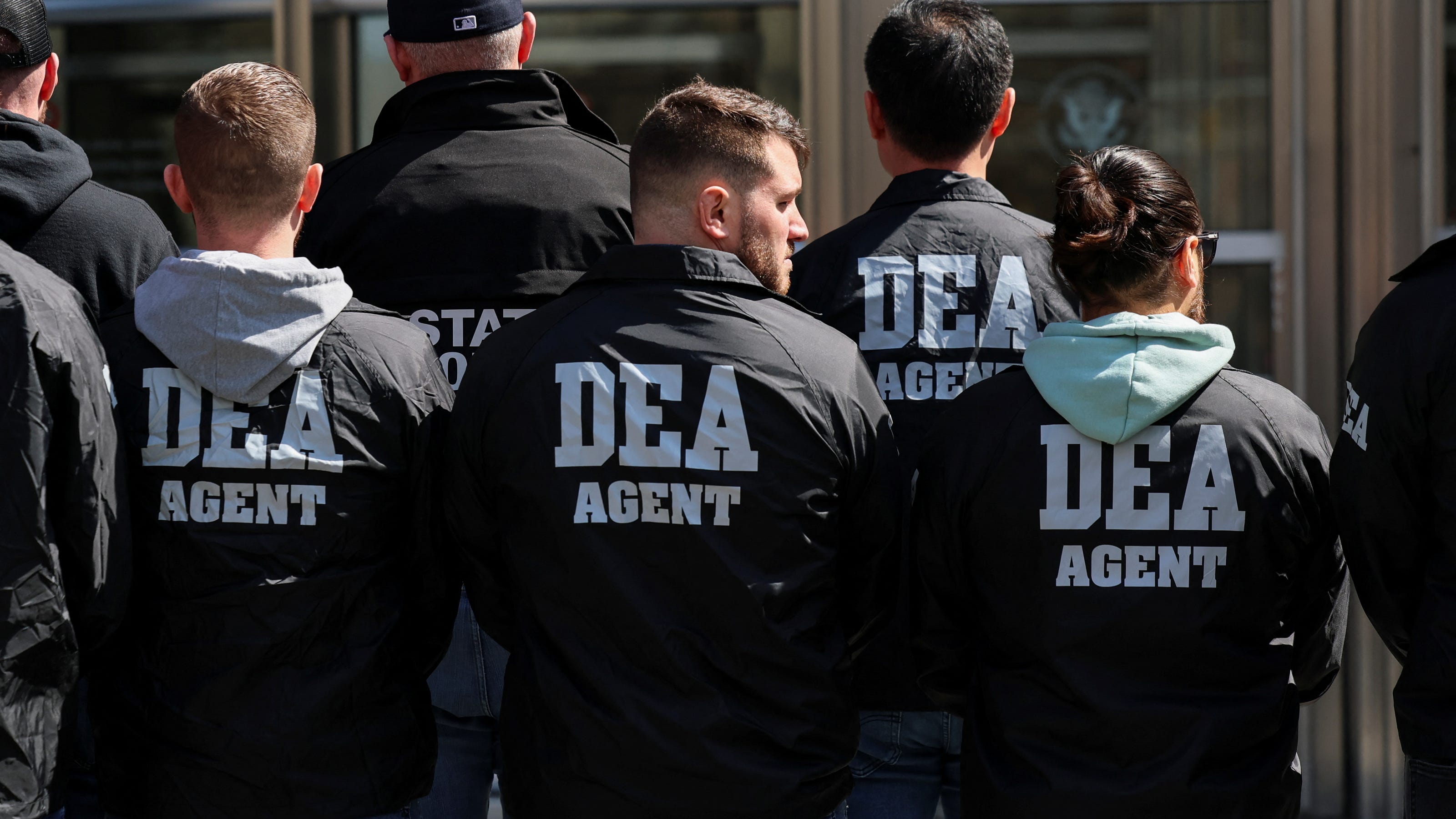DEA and ATF Merger: Justice Dept's Controversial Cost-Cutting Plan
Editor’s Note: The Department of Justice's proposed merger of the DEA and ATF has been announced today, sparking significant debate among law enforcement officials and the public.
Why This Matters: A Deep Dive into the DEA and ATF Merger Proposal
The Department of Justice's (DOJ) plan to merge the Drug Enforcement Administration (DEA) and the Bureau of Alcohol, Tobacco, Firearms and Explosives (ATF) is a significant development with far-reaching consequences for law enforcement and national security. This move, ostensibly a cost-cutting measure, raises critical questions about operational efficiency, agency expertise, and the potential impact on combating drug trafficking and gun violence. This article will explore the key aspects of this controversial proposal and its potential implications.
Key Takeaways:
| Point | Summary |
|---|---|
| Cost Savings Concerns | Questionable effectiveness and potential for increased operational inefficiencies. |
| Expertise Consolidation | Risk of diluted expertise in both drug enforcement and firearms regulation. |
| Bureaucratic Overlap | Potential for increased bureaucratic complexity and inter-agency conflicts. |
| Public Perception | Negative public reaction due to concerns about diluted focus and effectiveness. |
| Potential Benefits | Streamlined resources; possible improvements in inter-agency collaboration. |
DEA and ATF Merger: A Controversial Consolidation
The proposed merger of the DEA and ATF is presented by the DOJ as a necessary step to streamline operations and reduce budgetary burdens. However, many experts express serious concerns. The core argument for the merger centers on eliminating redundancies and improving inter-agency coordination. The DOJ suggests a unified agency could more effectively tackle the interconnected issues of drug trafficking and firearms violence.
Key Aspects of the Merger Proposal:
- Unified Leadership: A single director would oversee both agencies.
- Combined Resources: Budgetary and personnel resources would be consolidated.
- Streamlined Operations: The DOJ anticipates a more efficient investigative process.
Detailed Analysis:
The proposed merger raises significant questions about the potential loss of specialized expertise. The DEA possesses unparalleled knowledge in narcotics investigations, while the ATF maintains expertise in firearms tracing and regulation. Combining these distinct skill sets under a single leadership structure risks diluting the focus and efficacy of both agencies. Further, concerns exist regarding the potential for internal conflicts and bureaucratic inefficiencies within a newly merged, larger entity. The historical tension between drug enforcement and firearms regulation suggests the potential for conflicts and slower response times.
Inter-Agency Collaboration: A Necessary Evil?
The proposed merger intends to enhance collaboration. However, effective collaboration doesn't necessarily require a full-scale merger. Existing inter-agency task forces and information sharing protocols could potentially achieve similar results without the risks associated with consolidating two distinct agencies.
Budgetary Impact: Will it Truly Save Money?
While cost-cutting is the stated goal, many critics doubt the financial viability of the merger. The costs associated with restructuring, integrating disparate systems, and resolving potential inter-agency conflicts could easily outweigh any perceived savings. Furthermore, a loss of specialized expertise may lead to increased operational costs in the long run.
People Also Ask (NLP-Friendly Answers)
Q1: What is the DEA and ATF merger?
A: The DOJ's proposed merger aims to combine the Drug Enforcement Administration (DEA) and the Bureau of Alcohol, Tobacco, Firearms and Explosives (ATF) into a single agency, ostensibly to reduce costs and improve inter-agency coordination.
Q2: Why is the DEA and ATF merger important?
A: The merger is significant because it could fundamentally reshape how the US combats drug trafficking and gun violence. Success or failure will have major implications for public safety and national security.
Q3: How can the DEA and ATF merger benefit me?
A: Directly, the merger may not have a visible impact on individuals. However, if successful in reducing crime, it could contribute to a safer community.
Q4: What are the main challenges with the DEA and ATF merger?
A: Challenges include potential loss of specialized expertise, increased bureaucratic complexity, and the risk that cost savings will not materialize.
Q5: How to get started with understanding the DEA and ATF merger?
A: Stay informed by following reputable news sources and official statements from the DOJ, reading expert analysis, and engaging in informed discussions.
Practical Tips for Understanding the DEA and ATF Merger Debate
- Read official DOJ statements: Understand the government's rationale.
- Follow reputable news sources: Seek out balanced reporting from multiple outlets.
- Analyze expert opinions: Consider viewpoints from law enforcement professionals and academics.
- Research the historical relationship between the DEA and ATF: Understanding their past interactions provides context for the merger proposal.
- Assess potential risks and benefits objectively: Consider the potential positive and negative consequences.
- Engage in informed discussions: Share your insights and learn from others.
- Monitor the legislative process: Track the progress of any related bills.
- Pay attention to public reactions: Observe how the public perceives the merger.
Summary: The proposed merger of the DEA and ATF is a complex issue with significant potential implications for law enforcement and public safety. While the stated goal is cost reduction, concerns about diluted expertise and increased operational challenges remain. Careful monitoring and informed discussion are crucial to evaluate this significant policy change.
Closing Message: The DEA and ATF merger represents a turning point in US law enforcement. Will this consolidation truly streamline operations and improve effectiveness, or will it prove detrimental to national security? The coming months will be critical in determining the success or failure of this ambitious undertaking.
Call to Action: Share this article to spread awareness and participate in the crucial conversation surrounding the DEA and ATF merger. Stay informed and voice your opinion!

